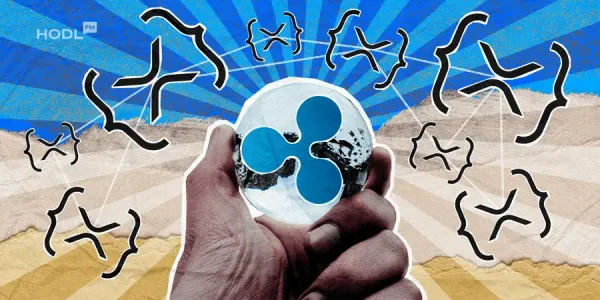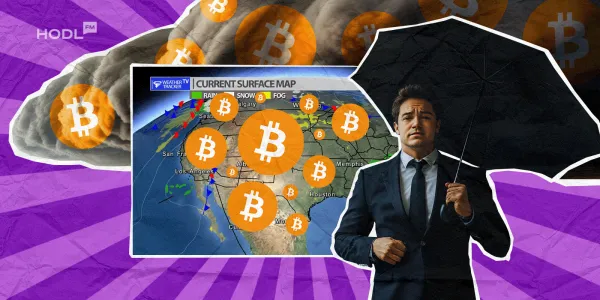Arguably, we are still in the crypto winter. Some would say the crypto spring is around the corner, but a crypto summer with wild bull runs still seems distant. Ahh, those sweet green arrows…
Despite this dull reminder, wallet providers are expanding their services to include support for BRC-20 tokens. This significant stride comes amidst a challenging period for the crypto market. It is nice to see that despite the downturn, the spirit of innovation remains undeterred. It is this unwavering commitment to technological progress that helps the crypto community thrive even in the face of adversity and keeps our faiths strong for a wild crypto summer. So, what’s the deal here?
What Are BRC-20 Tokens?
BRC-20 tokens, an experimental token standard, have made their mark in the cryptocurrency world. These tokens enable the creation and transfer of fungible tokens on the Bitcoin blockchain. Although similar in name to the widely adopted Ethereum’s ERC-20 tokens, BRC-20 tokens present unique designs and interactions with their underlying blockchain, offering a fresh take on token functionality.
The innovative design of BRC-20 tokens supports a numbering scheme for tracking individual satoshis in Bitcoin, relying on JSON format for inscriptions. To extract information and record balances off-chain, an indexer is required.
They harness the potential of the Bitcoin blockchain, leveraging its compatibility, simplicity, and security. However, just like any other nascent technology, they come with their own limitations. These constraints, such as the lack of smart contract functionality and limited interoperability, are worth noting. As this area of cryptocurrency continues to evolve, we will likely witness further expansions and adaptations to these tokens and their functionalities.
Potential Uses of BRC-20 Tokens
BRC-20 is not an ERC-20 ripoff, as you might have figured. These tokens offer a tokenization solution for the Bitcoin community, infusing it with renewed versatility and functionality. They bear Bitcoin’s signature strengths – security and decentralization – and open the doors to a variety of applications.
From serving as tokenized assets and playing roles in decentralized finance (DeFi) projects to facilitating supply chain management and adding value in gaming and NFTs, BRC-20 tokens promise diverse uses.
Despite their experimental status, BRC-20 tokens have captured significant interest, with their market capitalization surpassing $200 million. A couple of months ago, the market cap reached nearly a billion USD! This interest reflects a shift in wealth perspectives and adds a new layer to the dynamics of the crypto market.
Role of Wallet Providers
Wallet providers play a critical role in shaping the crypto landscape. First, if there were no wallets, we would store our crypto in exchanges. As intermediaries, they hold the key to user adoption of new crypto developments. So, they are essential.
In the case of BRC-20 tokens, their adoption and spread will rely heavily on wallet providers’ willingness to integrate BRC-20 token support into their services.
Responding to the call of “oh no, unending crypto downturn!” many wallet providers have introduced support for BRC-20 tokens. This new feature, while presenting fresh challenges, promises enhanced flexibility and options for users. With wallet providers pioneering this shift, the potential for BRC-20 tokens to thrive and innovate the Bitcoin network is on the horizon.
BitKeep, a self-custody wallet provider, has taken a bold step in embracing this potential, as it recently announced its support for BRC-20 tokens. This allows users to view, rank, and transfer these tokens and non-fungible tokens (NFTs).
Other exchanges and wallets, like OKX and Trust Wallet, have followed suit, integrating BRC-20 tokens into their platforms. These strategic moves suggest that market players believe in the value these tokens bring, seeing beyond their current limitations and appreciating their potential for growth and expansion.
Possible Effects: Upturn, Maybe?

The current market downturn presents both challenges and opportunities for the introduction of new crypto features like BRC-20 tokens. It’s undeniably a time fraught with uncertainties; investors and traders might exercise increased caution in their activities, especially regarding the adoption of novel tokens. Yet, paradoxically, it is also a period that could hold substantial potential for innovation and growth.
Notably, the BRC-20 standard is an experimental one, described by its creator as a “fun experiment” rather than a fully established standard. Its market capitalization, though having neared $1 billion in the past, has seen a significant decline, primarily due to the dominance of meme coins like WZRD, PIZA, and PEPE. However, the downward trend does not necessarily signal the end of BRC-20 tokens. Instead, it could be a moment of evolution and adaptation, leading to more robust standards in the future.
The potential of BRC-20 tokens is vast. They allow for the creation and transfer of fungible tokens on the Bitcoin blockchain, run parallel to Bitcoin on the Bitcoin network, and can be sent between peers. Their diverse use cases, including peer-to-peer transfers and potential integration into decentralized finance (DeFi) protocols on the Bitcoin network, attest to their versatility. They could pave the way for the tokenization of real assets.
Conclusion
It’s clear that wallet providers are not letting a market downturn slow them down. By introducing BRC-20 token support, they’re opening up new possibilities for users and contributing to the ongoing evolution of the crypto space. So, don’t let the market blues get you down too – with innovations like this, there’s always something exciting happening in the world of crypto and the crypto summer is near (hopefully). So, don’t forget to start looking for a Lambo (again, hopefully).




